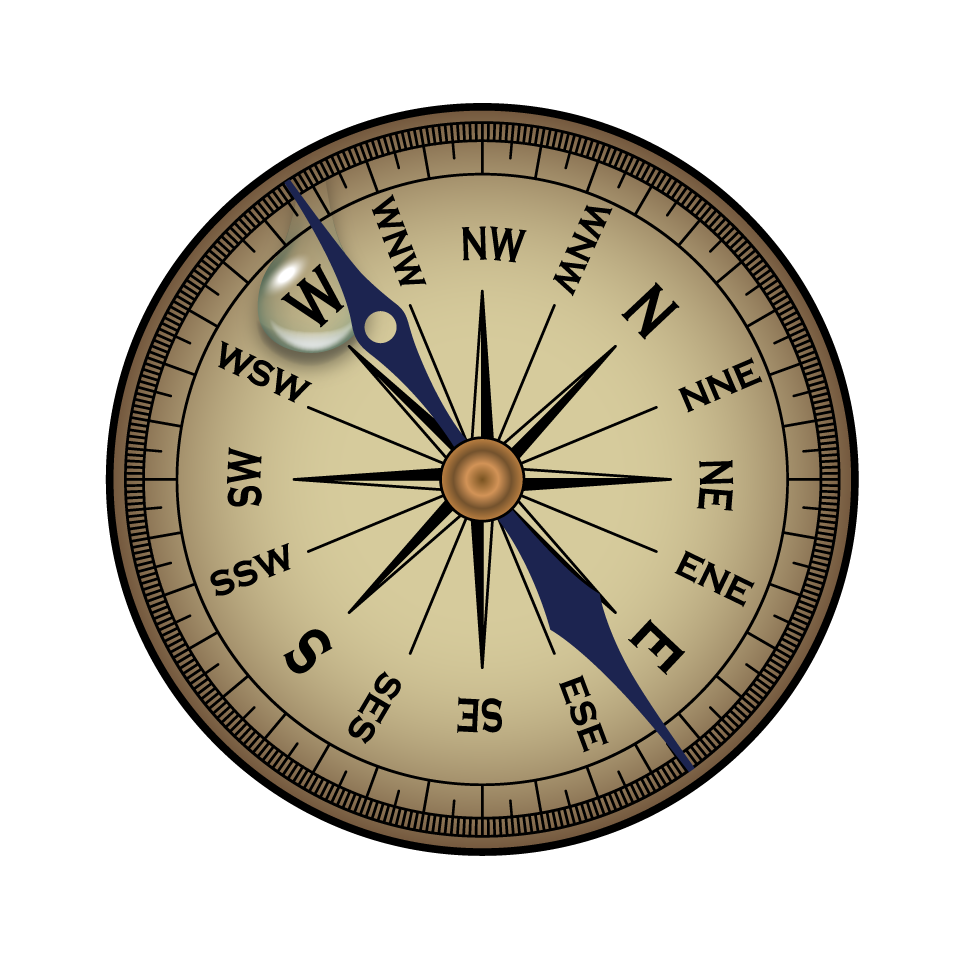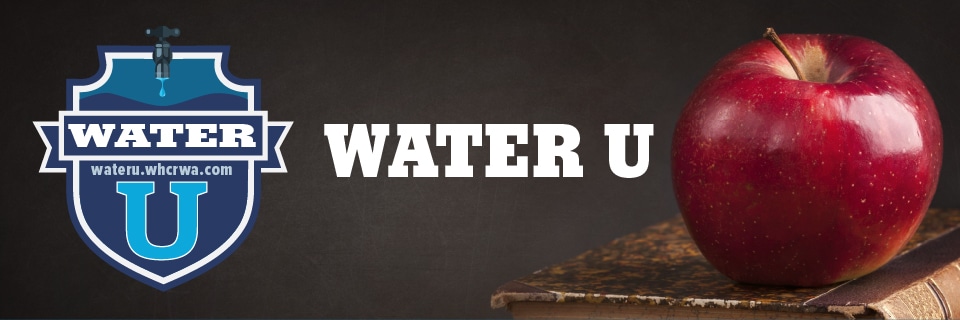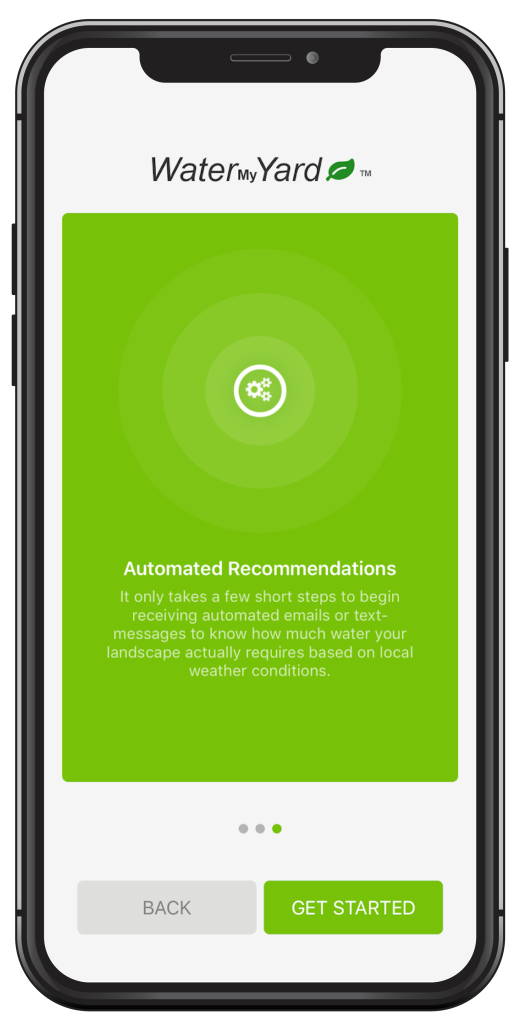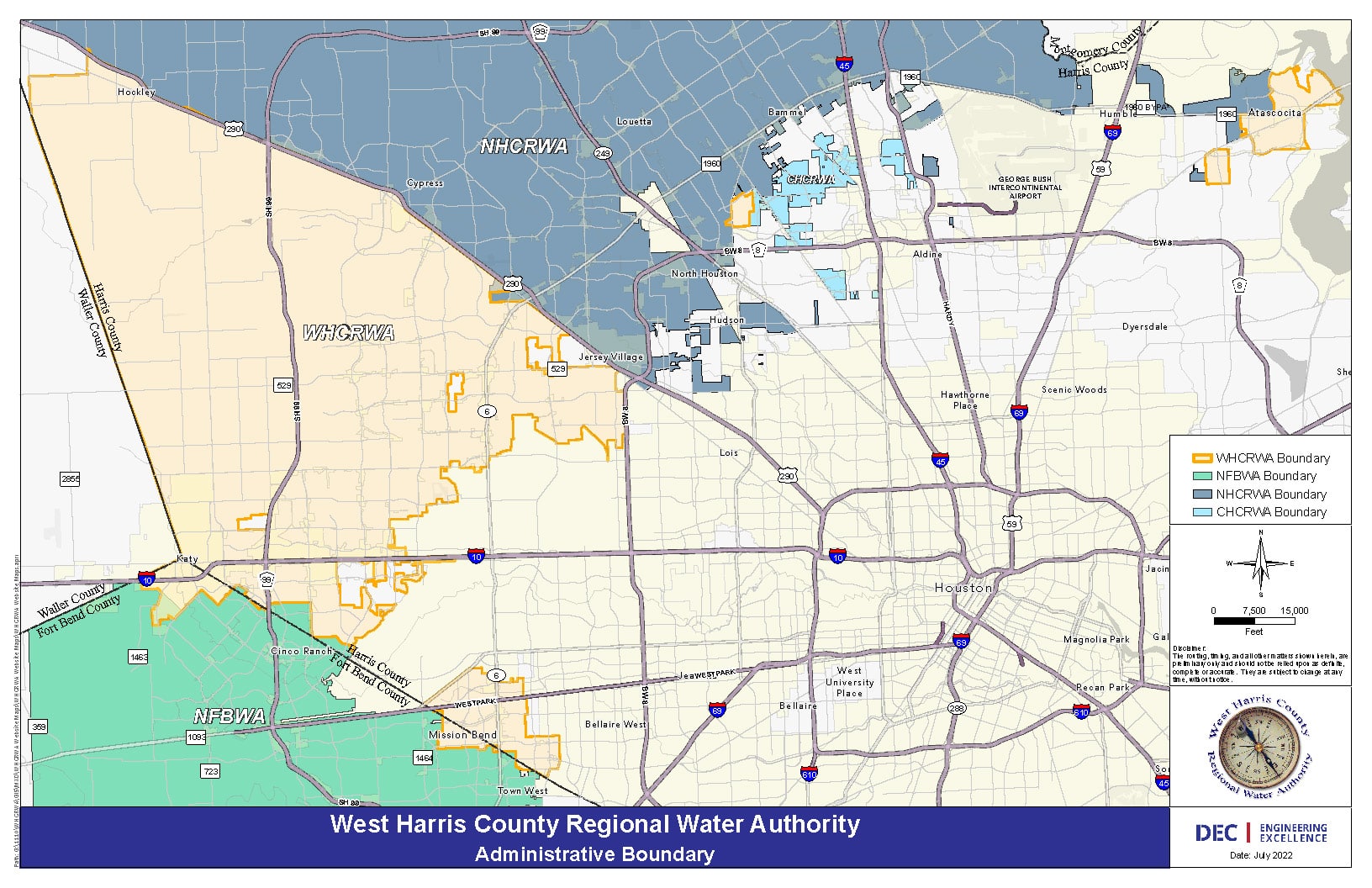EXECUTIVE SUMMARY
The West Harris County Regional Water Authority (WHCRWA) was created by House Bill No. 1842 (the “Act”) in the 77th Legislature and signed into law on May 28, 2001. The WHCRWA was created to accomplish the purposes of provision of surface water and groundwater for various uses, the reduction of groundwater withdrawals, the conservation, preservation, protection, recharge, and prevention of waste of groundwater, and of groundwater reservoirs, the control of subsidence caused by withdrawal of water from those groundwater reservoirs, and other public purposes stated in the Act.
The boundaries of the WHCRWA are generally U.S. 290 on the north/northeast, Houston city limits on the east, Harris/Fort Bend county line on the south and Harris/Waller county line on the west. There are currently 120 municipal water providers (utility districts plus the City of Katy) within the boundaries of the WHCRWA and eight municipal utility districts located outside the boundaries of the WHCRWA included in the Groundwater Reduction Plan (GRP). These municipal water providers and independent well owners currently operate 317 groundwater wells that are subject to GRP requirements. The total water demand of these users in 2018 was approximately 22.3 billion gallons. All these numbers continue to change with the growth occurring in this region.
Population projections were developed for individual census tracts within the WHCRWA utilizing Center for Public Policy (CPP) data. Projected water demands were determined for these census tracts as well as for individual municipal utility districts within the WHCRWA based on data from the U.S. Census Bureau, the CPP at the University of Houston, the Harris-Galveston Subsidence District (HGSD), and responses to questionnaires submitted by MUDs and the Texas Commission on Environmental Quality (TCEQ).
Projected population through year 2050 for the WHCRWA is shown below:
WHCRWA Projected Population
Source: Texas Water Development Board
The HGSD requires that in 2010, 30% of the total water demand is to be provided using surface water. In 2025 and 2035, the conversion requirement increases to 60% and 80%, respectively.
The WHCRWA’s source of alternative water will be the City of Houston (COH) pursuant to a water supply contract entered into in 2003 and supplemented in 2009 and 2015.
Since 2010, the supply point for COH surface water to the WHCRWA is the COH’s Jersey Village Pump Station located on Fairview Street north of FM 529, west of COH city limits. The water is supplied from the COH’s East Water Purification Plant (EWPP) and conveyed through existing transmission mains. For 2025 and beyond, the additional source of COH water to the WHCRWA will be from the COH’s Northeast Water Purification Plant (NEWPP) located on Lake Houston. The NEWPP is being expanded to meet the needs of the WHCRWA, other authorities, and the COH for 2025 and 2035 conversion mandates.
The WHCRWA transmission system was designed to provide adequate water to meet the requirements for conversion to surface water as set forth by the HGSD, which are 30 percent conversion by 2010, 60 percent conversion by 2025, and 80 percent conversion by 2035.
During the construction to meet the 2010 requirements, the WHCRWA built a booster pump station and ground storage tanks in the immediate vicinity to accept the water and boost the system pressure. Transmission lines within the system were designed to provide the average day, peak day, and peak hour flow. Residential fire demands were also considered.
Prior to 2010, the WHCRWA purchased from the COH a total capacity of approximately 28.25 million gallons per day. By 2010, construction of the entire first phase was completed, and the WHCRWA continues to meet the HGSD conversion requirements of 30% alternate water.
The 2010 service area is generally the area bounded by Highway 290 on the north, Brittmoore on the east, Clay Road on the south and Barker-Cypress on the west. The WHCRWA began delivering surface water in 2005.
The WHCRWA provided for early conversion of several utility districts, where subsidence and water quality/quantity issues were experienced. This early conversion resulted in the accumulation of groundwater credits before 2010. The WHCRWA has also directly purchased Water Conservation Program Credits through the HGSD and purchased additional existing credits from other entities who participated in the HGSD school program. WHCRWA continues to accumulate a variety of credits, including participating in the HGSD Water Conservation School Program and over-conversion credits.
The WHCRWA is compiling these credits for future use if necessary.
House Bill No. 1842 empowers the WHCRWA to fund its projects and operations by a variety of methods. These include (1) charges, rates, fees, user fees, (2) special assessments, (3) notes, (4) bonds, (5) capital contributions received from municipalities or utility districts within the boundaries of the WHCRWA, and (6) other available funds. The WHCRWA financed its purchase of the City of Houston treatment plant capacity and transmission main capacity and design and construction of WHCRWA facilities by issuing WHCRWA bonds and by some capital contributions from utility districts. The bonds issued are payable from fees and charges imposed by the WHCRWA for pumpage of groundwater and sale of surface water. The WHCRWA’s fees and charges also pay for operation and maintenance of its facilities, administration of the authority, and debt service, as necessary to fulfill its obligations and purposes.





